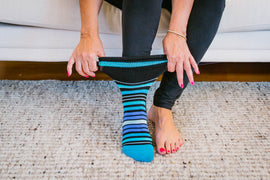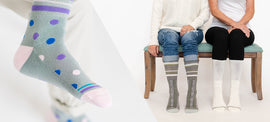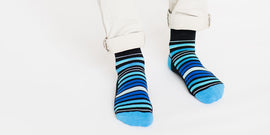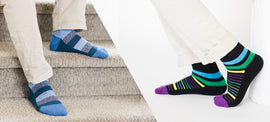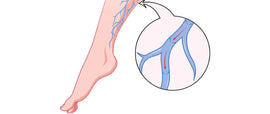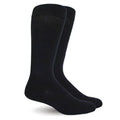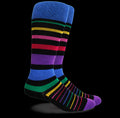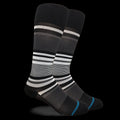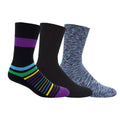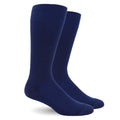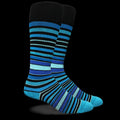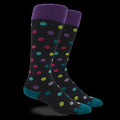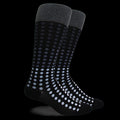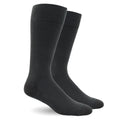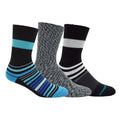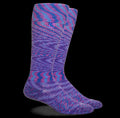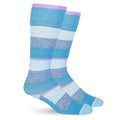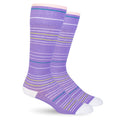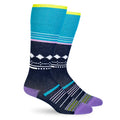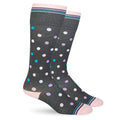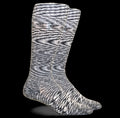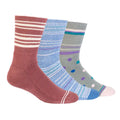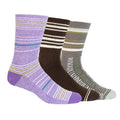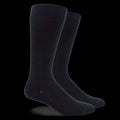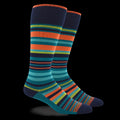Achieving Optimal Comfort and Benefits: How Compression Socks Should Fit
Posted by HAYLIE SEGAL
Compression socks are a popular choice of medical device due to their numerous health benefits and ability to enhance leg circulation. However, to reap these advantages, it is crucial to wear compression socks that fit properly. In this blog, we will explore the importance of a proper fit for compression socks and provide guidelines on how to ensure the best fit for optimal comfort and effectiveness.
Understanding Compression Levels: Before delving into the fitting process, it's essential to understand the concept of compression levels. Compression socks are available in various pressure gradients, typically measured in millimeters of mercury (mmHg). Common compression levels range from mild (8-15 mmHg) to moderate (15-20 mmHg), to medical-grade (20-30 mmHg).
-
Measure Your Leg: To determine the right size for your compression socks, the first step is to measure your leg accurately. Use a flexible measuring tape or a string to measure the following:
a. Ankle Circumference: Measure the circumference just above the anklebone, around the narrowest part of the ankle. b. Calf Circumference: Measure the widest part of your calf.
-
Refer to the Size Chart: Once you have obtained the measurements, refer to the size chart provided by Dr. Segal's.
-
Choose the Right Size: Using your measurements, identify the appropriate size range that corresponds to your measurements on the size chart. Typically, compression sock sizes are based on ankle & calf circumference and shoe size. Ensure your measurements fall within the recommended range for a proper fit. If you fall into two sizes, we suggest sizing up. Still need more help, feel free to contact us.
-
Consider Anatomical Fit: Compression socks should offer a snug, yet comfortable fit. Here are a few additional factors to consider when trying on compression socks:
a. Toe and Heel Fit: Ensure the compression sock has ample room for your toes to move comfortably. The heel should fit snugly without any excess fabric gathering. b. Wrinkle-Free: When wearing compression socks, they should be smooth and free of wrinkles. Wrinkles can lead to discomfort and hinder the effectiveness of compression.
-
Trial and Adjustment: Once you have acquired your compression socks, try them on and assess the fit. Pay attention to the following factors:
a. Comfort: Compression socks should not feel excessively tight or restrictive. They should provide gentle pressure and support without causing discomfort, almost like a hug to your legs. b. Even Compression: The compression should be evenly distributed across your leg, with no areas feeling overly constricted or loose. c. Stay in Place: Compression socks should stay in position without sliding down or bunching up during movement.
-
Consult a Healthcare Professional: If you have specific medical conditions or concerns, it is advisable to consult a healthcare professional for guidance on compression sock selection and fitting. They can offer personalized recommendations based on your unique needs.
Properly fitted compression socks are crucial for experiencing the maximum benefits they offer. By measuring your leg accurately, choosing the correct size, and considering anatomical fit, you can ensure a comfortable and effective compression sock experience. Remember, if you have any medical concerns or questions, consult a healthcare professional who can provide specialized advice tailored to your situation. Embrace the power of well-fitting compression socks and take a step towards healthier, happier legs.
SHARE:




